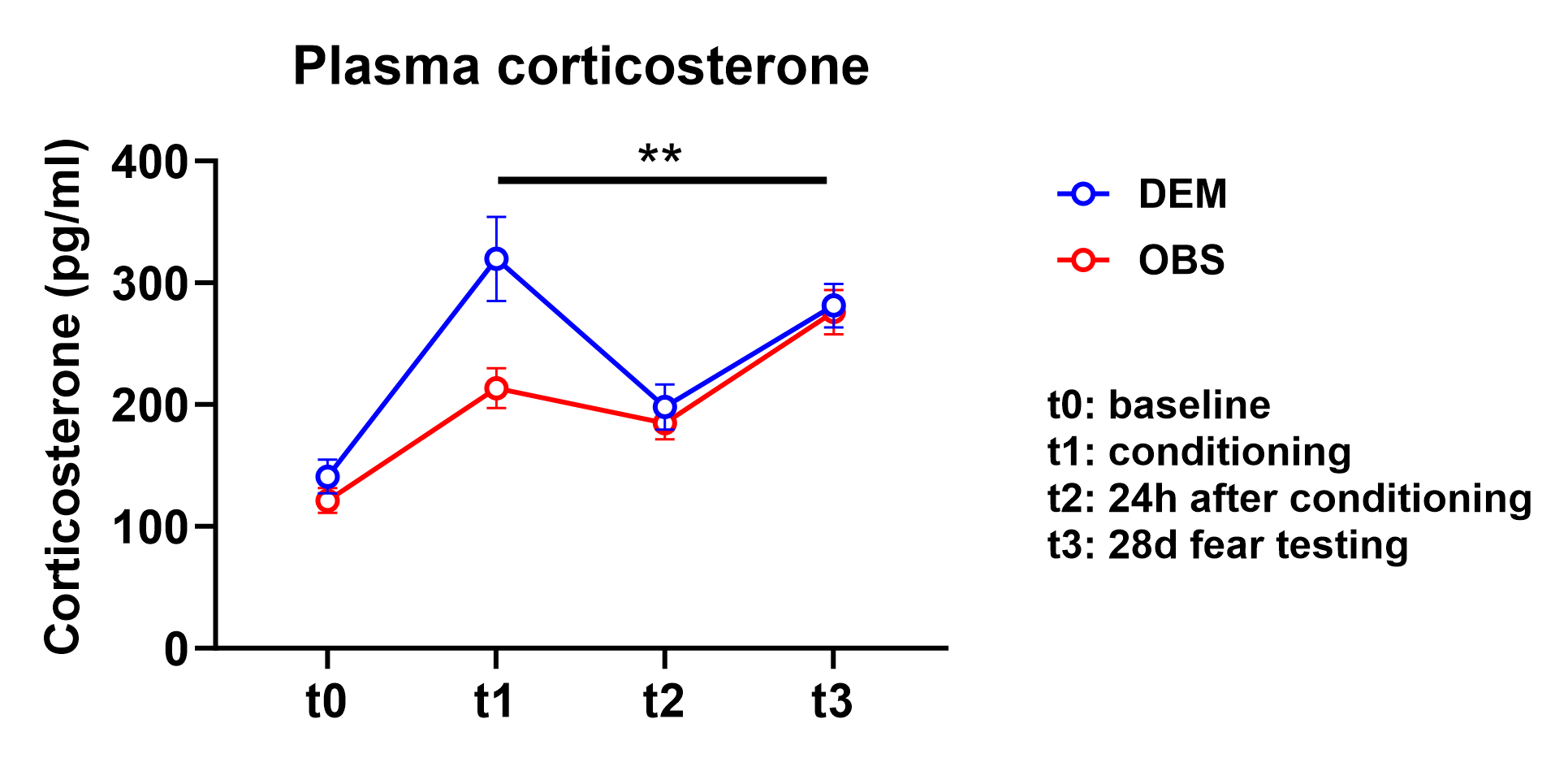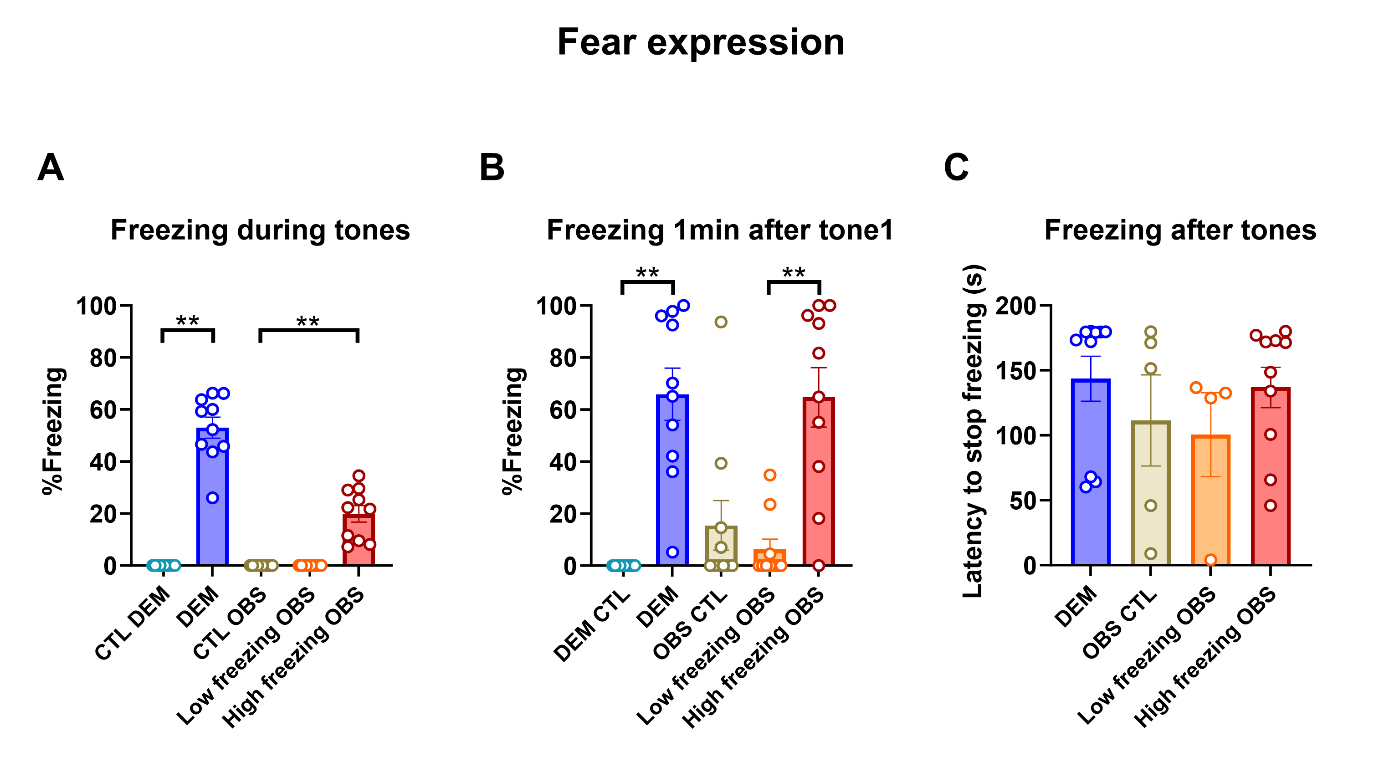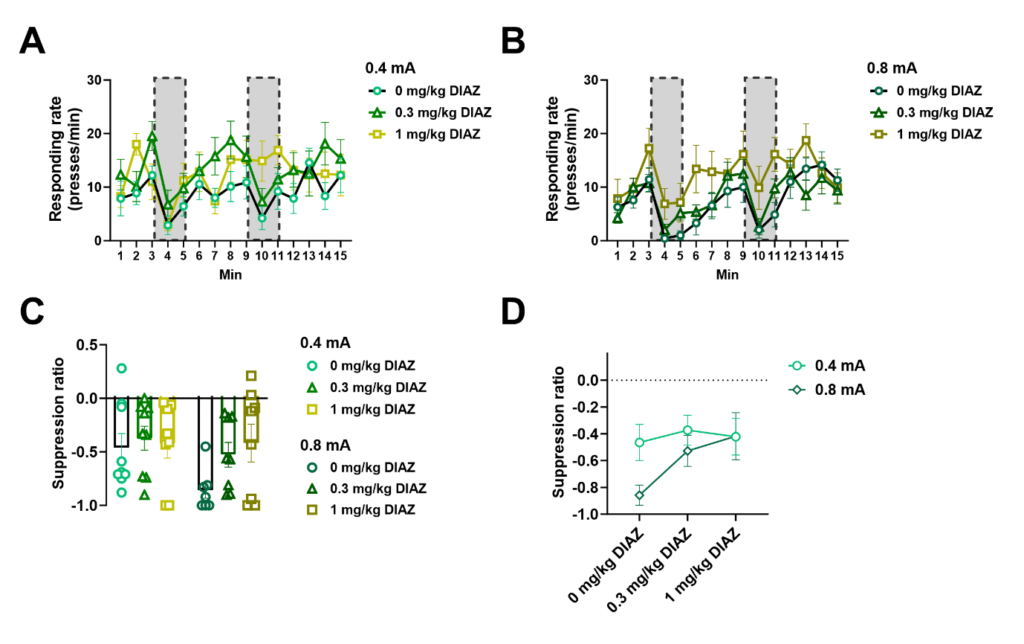Observational fear conditioning
Corticosterone concentrations were found higher in the timepoints T1 to T3, Showing an increased stress response in the animals after the experimental manipulation.

The animals exhibited freezing behaviour mainly in the minute after the acoustic tone (B), and less during the tone itself (A). With latency of freezing that could extend to the total of three minutes of inter-tone (C).

For all the behaviours, the animals showed high exploratory behaviours in the two-minute time before the acoustic tone (baseline), with a drastic reduction during the tone. This favors the surfacing of vigilant behaviours and freezing during the tone, which skyrockets in the minute after the acoustic tone.

Operant fear conditioning
Animals experienced a drop in operant performance (lever presses) during the two-minute tones, more explicit with higher shock intensity groups (A & B). The injections of diazepam validated the suppression ratio, with higher dosages showing a lesser suppression (C & D).
